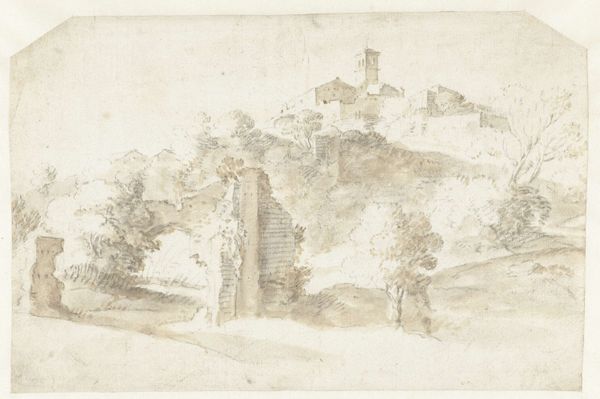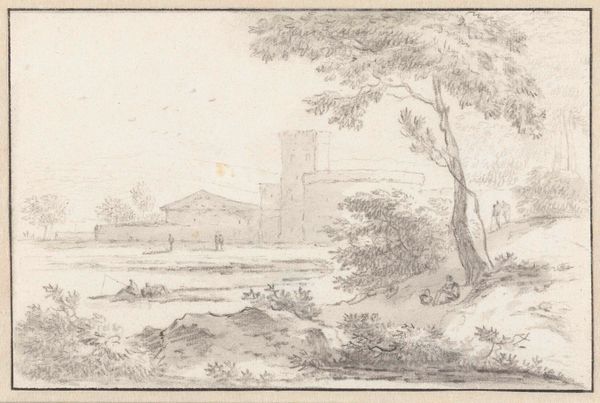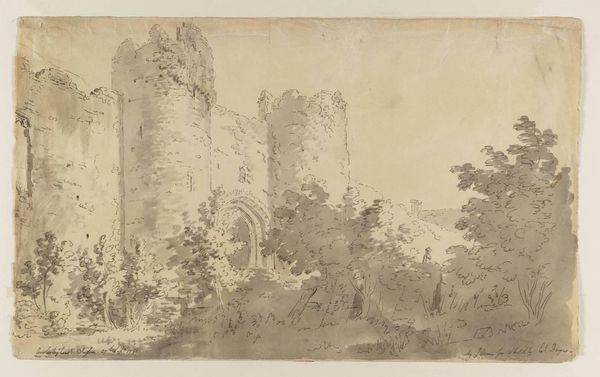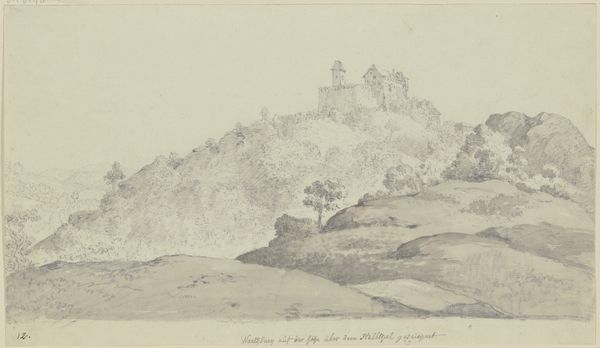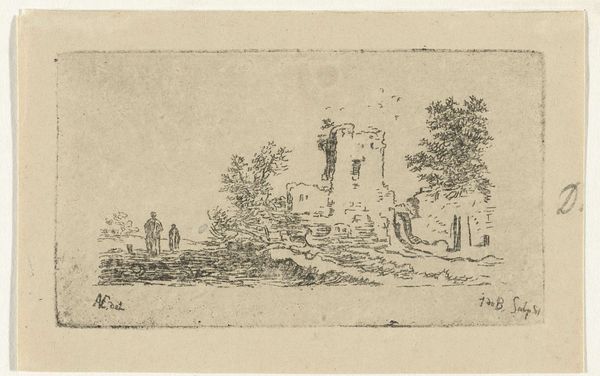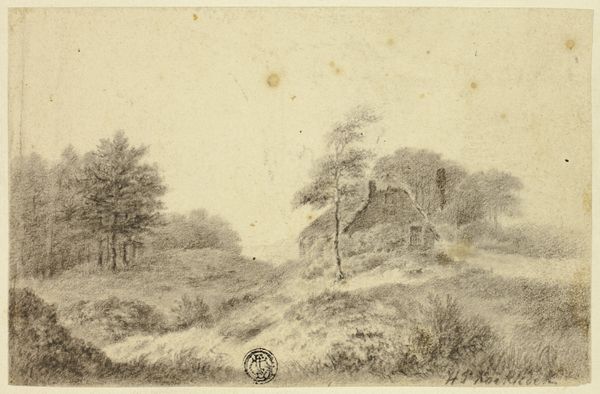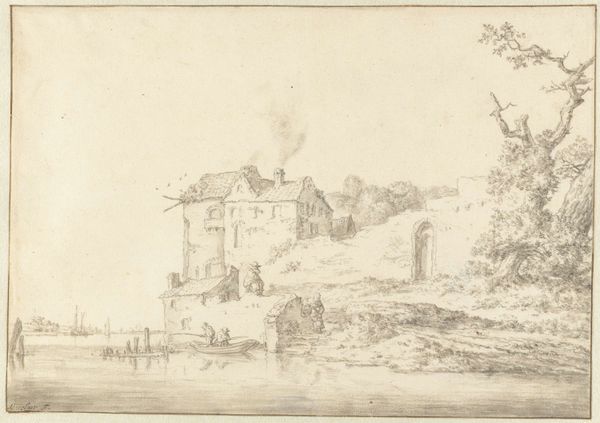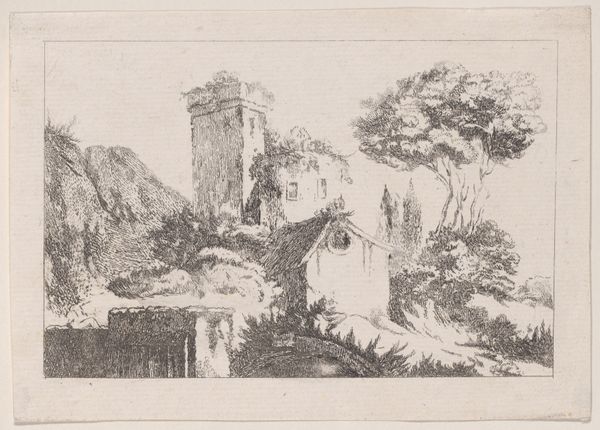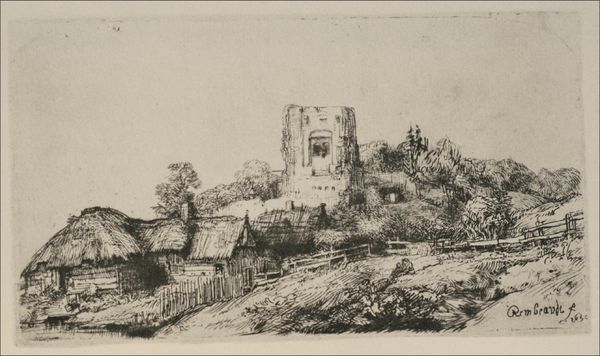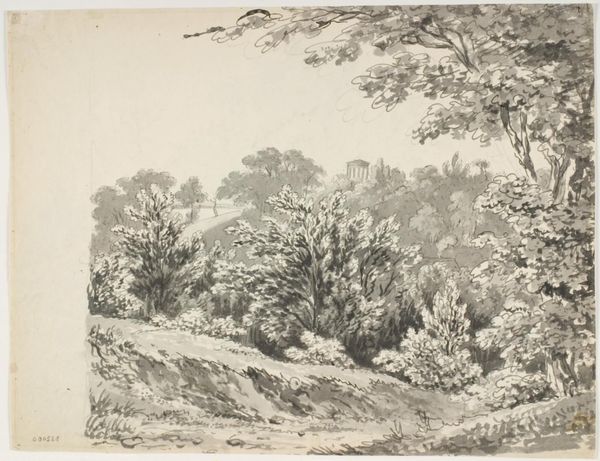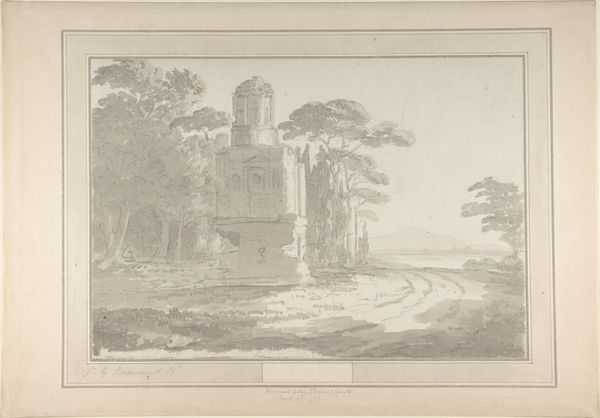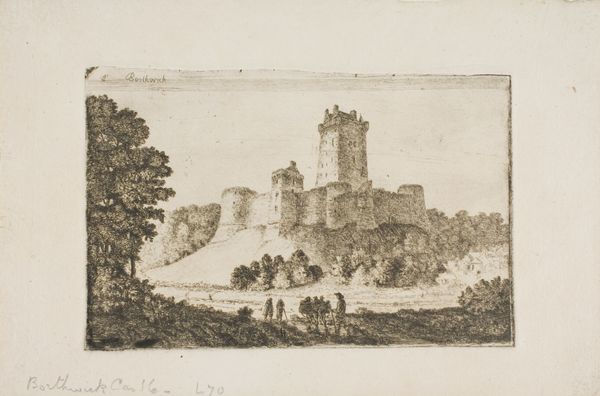
Dimensions: support: 242 x 348 mm
Copyright: CC-BY-NC-ND 4.0 DEED, Photo: Tate
Curator: What strikes me immediately is the somber mood, a quiet melancholy. The ruined tower dominates the hill, surrounded by dense foliage. Editor: This is "Nice. A Tower on a Hill. Verso: The Same Ruined Castle" by Joseph Wright of Derby. There’s no precise date, but Wright, born in 1734, captured this scene using primarily gray washes on paper. Curator: The tower’s state of decay speaks volumes about power, doesn't it? About societal shifts and the inevitable decline of even the most imposing structures, all viewed through a lens of Romantic ruin. Editor: Absolutely. Wright was deeply interested in the picturesque, and these ruins offered a connection to both history and the fleeting nature of human endeavor. It reflects the complex social and political climate of his time. Curator: I'm left pondering the narratives embedded within these stones and the stories they could tell, underscoring our own fleeting presence on this earth. Editor: A powerful reminder of the layers of history and interpretation embedded within a seemingly simple landscape sketch.
Comments
tate 7 months ago
⋮
http://www.tate.org.uk/art/artworks/wright-nice-a-tower-on-a-hill-verso-the-same-ruined-castle-t08253
Join the conversation
Join millions of artists and users on Artera today and experience the ultimate creative platform.
tate 7 months ago
⋮
Wright sailed for Rome in November 1773. His trip was possibly inspired by a similar tour undertaken by his teacher, the portraitist Thomas Hudson (1701-79) in 1752. Briefly stopping en-route in Nice in December, Wright made several picturesque sketches of the surrounding countryside. These pre-figure his later Italian landscapes and reveal his refined touch. This drawing, in particular, is rich in minute topographical detail. However, its design recalls Wright''s treatment of a single portrait subject, the castle ruin and the diagonal of the hill-slope anchoring the composition like a seated figure. Gallery label, August 2004
